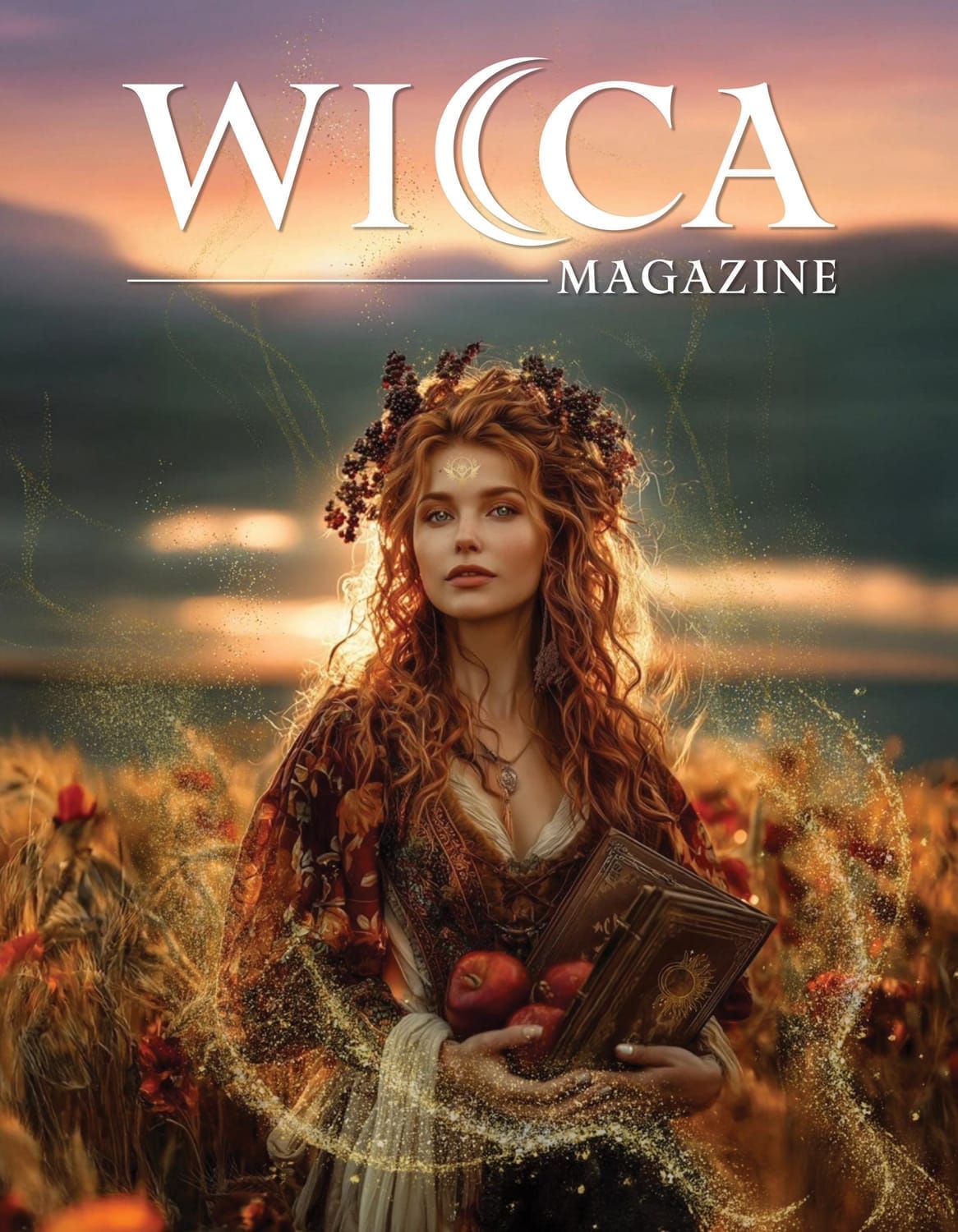
Unlock the Magick of August — Your Wicca Magazine Issue Awaits
Step into the season of light with Wicca Magazine. Each digital issue is a sacred offering of spells, rituals, and Wiccan wisdom — honoring ancient paths and empowering your modern magick. Your craft, your journey, your magickal sanctuary.
Fire in Art: Celebrating and Harnessing Its Magickal Essence
Though several of the Sabbats are fire festivals, for many, Beltane is the Fire Festival. Though the Bonfire may reign supreme at fire festivals, there are many other ways to bring fire into your celebrations—and not just on the Sabbat.
Using fire to create art is a wonderful way to honor it, harness its energies, and celebrate the light. Fire has long been a part of artistic expression, and there are many ways you can use fire to create art. We’ll cover a few here.
Fire Performance Art
Fire has a long history in performance. Swallowing fire. Breathing fire. Fire batons. Fire dances. Like fire, the very essence of this art is fleeting, as it isn’t fixed like painting or sculpture. Fire performance art truly forces the artist to connect with fire and its energies. The flame is an integral part of the performance, just as much the star as the person performing it. With bonfires a major part of Beltane festivals and celebrations, fire performance art can easily be incorporated into a sabbat. It is also easy to combine a fire performance with a spell ritual.
Burning Paper
A form of pyrography, there are many ways to combine paper and fire to create art. Burning holes as a form of pointillism are one way (pointillism uses small, distinct dots to create a larger image.) On thicker paper, you can use the flame, smoke, and soot of a candle or torch to create images. The proximity of the flame to the media and the length of time it is held there create varying shades of gray and black, allowing for more depth. You can also burn paper down into shapes and combine them to create more three-dimensional art. The effects of fire are clearly visible in this form of art, as the burnt areas are vital to the final piece. It’s also an easier way to begin creating art with fire, as it usually doesn’t require specialty tools.
Wood Burning
Another form of pyrography, wood burning typically doesn’t use a live flame to create but a heated metal rod that burns the wood. Using different tips and heat settings, you can create an array of burn colors, textures, depths, and shapes for some truly intricate art. Called “fire needle embroidery” in ancient China, this type of burning can also be used on leather, silk, and other materials. Wood burning is a fantastic way to combine nature and art, as well as infuse a piece with the natural energies of the wood you choose. Softwoods, such as ash, birch, maple, and pine, are best for beginners as they are easier to burn and manipulate than hardwoods. Though an active flame isn’t used, small flames can pop up as you burn the wood, and the “effect” of fire, the burn, is the key element of the finished piece.
Charcoal
Charcoal is one of the oldest art mediums, with examples of charcoal cave paintings dating back more than 28,000 years ago. Charcoal is another fire art medium that doesn’t use fire directly but uses the after-effect of fire—charcoal—to create the art. There are several types of charcoal used for art. Some charcoal is made from grape vines or willow being burned in a kiln without air. Compressed charcoal comes in sticks or pencils. Common methods of creating with charcoal include hatching, rubbing, blending, and lifting. Charcoal is less permanent than painting or drawing with other mediums, as the charcoal can flake off. Treating your completed media with a binding agent, such as a gum bath, will help it last.
Glass Blowing
Though the finished art in glass blowing and glass molding doesn’t typically show any indication of flame, this art could not exist without fire. To become liquid and malleable, glass is heated by flames that are at temps between 1,600 and 1,900 degrees Fahrenheit (870–1040 degrees Celsius). Glass workers use handheld torches to keep the glass from cooling too quickly and preventing work from continuing. Direct flame is applied to these creations for them to come into existence. So, while the finished result may not exhibit the touch of fire like the previous examples, fire is vital to creating glass artwork. Due to the popularity of shows like Blown Away on Netflix, many cities now have studios that offer glass-blowing classes for those who would like to try, as it isn’t something you can just pick up at home.
Pottery
Like charcoal art, pottery is almost as old as fire itself. And not just functional items like bowls and pots. There is a statue dating to at least 29,000 BCE. Like glass blowing, fire is pivotal to the process of creating pottery, as the raw clay needs to be fired after it is shaped to set it. Raku, a Japanese style of firing, is particularly interested in leaving the effects of the fire on the finished product. Different objects are wrapped in the pottery, leaving different burns, scorches, and colors on the hardened clay after firing. But even traditionally glazed pottery exists because of fire. Pottery is especially great for transformational spell art, as the material transforms from the firing. Though many modern kilns don’t use an actual flame to create heat, many potters still use fire-based kilns to create their finished works.
Metalwork
Metalwork, whether sculpture or jewelry, is another art form that relies on fire. Fire is used to soften or completely melt the metal to shape and change it for the art piece. Metalwork art often requires the use of a handheld torch, making the artist active with fire to create the art.


